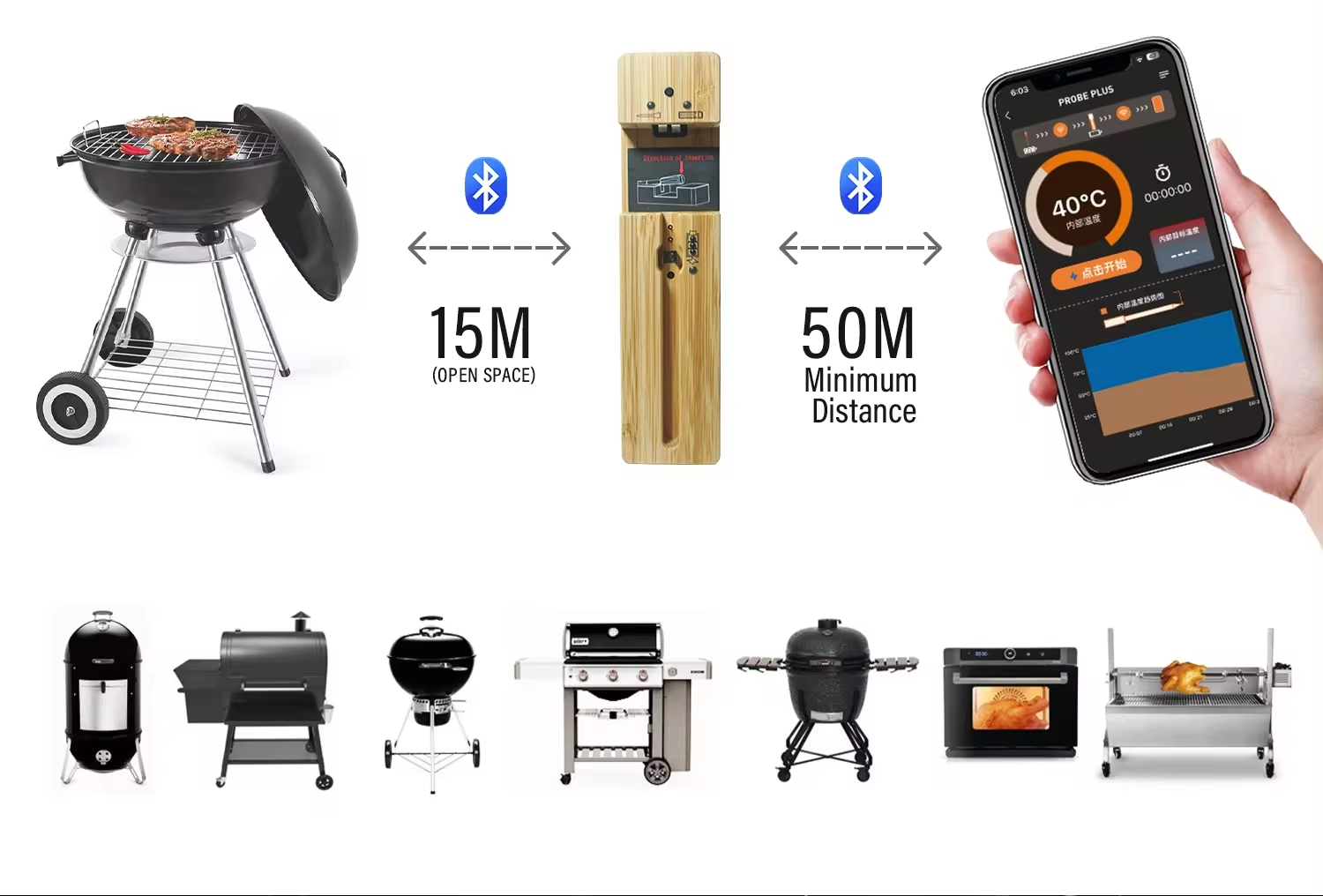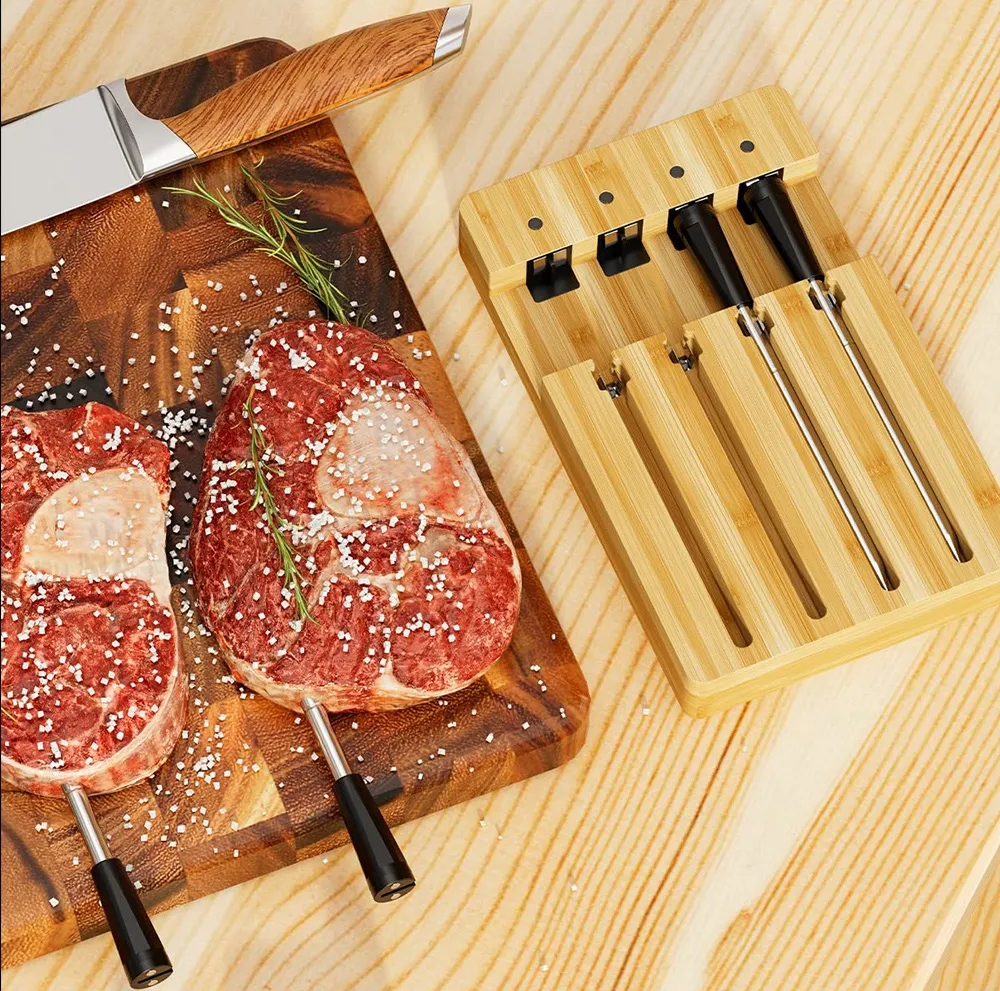
——————
Still guessing the temperature of meat while cooking?
Gone are the days of guessing when your steak is medium-rare or your chicken is safely cooked through. A best meat thermometer digital is a scientific tool that takes the guesswork out of cooking meat, ensuring perfectly cooked, juicy, and most importantly, safe meals every time. This guide will delve into the proper use of a digital meat thermometer, exploring the science behind accurate temperature readings and providing practical tips for achieving the desired doneness in various cuts of meat.
Understanding Internal Temperature and Food Safety
At its core, a best meat thermometer digital measures the internal temperature of the meat. This temperature is crucial for ensuring food safety. Bacteria can thrive in undercooked meat, leading to foodborne illness. The United States Department of Agriculture (USDA) publishes safe minimum internal temperatures for different types of meat https://www.fsis.usda.gov/food-safety/safe-food-handling-and-preparation/food-safety-basics/safe-temperature-chart. These temperatures represent the point at which harmful bacteria are destroyed.
However, temperature isn't just about safety. It also impacts the texture and taste of the meat. Different proteins within the muscle tissue begin to denature (change shape) at specific temperatures. This denaturation process affects the texture and juiciness of the meat. For instance, a rare steak will have a softer texture and retain more of its natural juices compared to a well-done steak.
Choosing the Best Meat Thermometer Digital
The market offers a variety of digital meat thermometers, each with its own features and functionalities. Here's a breakdown of the two most common types:

-
Instant-Read Thermometers:
These are the most popular choice for home cooks. They feature a thin probe that is inserted into the meat to quickly measure the internal temperature. Instant-read thermometers typically provide a reading within seconds, making them ideal for monitoring the cooking process.
-
Leave-in Thermometers:
These thermometers come with a probe that is inserted into the meat and you can monitor the temperature of your food or oven in real time from a mobile app. To help you cook more professionally. This allows you to monitor the temperature of the meat continuously without opening the cooking chamber, which can help prevent heat loss and ensure even cooking.

Here are some additional factors to consider when choosing a best meat thermometer digital:
-
Temperature Range:
Ensure the thermometer can measure the range of temperatures you typically use for cooking meat.
-
Accuracy:
Look for a thermometer with a high degree of accuracy, typically within +/- 1°F (0.5°C).
-
Readability:
Choose a thermometer with a clear and easy-to-read display.
-
Durability:
Consider the materials used in the probe and housing to ensure the thermometer can withstand the heat of cooking.
Using Your Best Meat Thermometer Digital for Perfect Results
Now that you have your best meat thermometer digital, let's explore the proper technique for taking accurate temperature readings:
-
Pre-Heat:
Always preheat your oven, smoker, or grill to the desired temperature before placing the meat inside.
-
Probe Placement:
Locate the thickest part of the meat, avoiding bones, fat, and gristle. These areas can give inaccurate readings. For some cuts, like whole chickens or turkeys, you may need to insert the probe in multiple locations to ensure even cooking.
-
Depth:
Insert the probe deep enough to reach the center of the thickest part of the meat. A good rule of thumb is to insert the probe at least 2-inches deep.
-
Stable Reading:
Once inserted, hold the thermometer probe steady for a few seconds to allow for an accurate reading. Instant-read thermometers will typically beep or display a stable temperature once reached.
-
Resting:
After removing the meat from the heat source, it's important to let it rest for a few minutes before carving or serving. This allows the internal temperature to continue to rise slightly and the juices to redistribute throughout the meat.
A Scientific Approach to Different Cuts of Meat
Here's a table summarizing the safe minimum internal temperatures for various cuts of meat, along with recommended doneness levels and their corresponding temperature ranges:
References:
- www.reddit.com/r/Cooking/comments/u96wvi/cooking_short_ribs_in_the_oven/
- edis.ifas.ufl.edu/publication/FS260
Post time: May-07-2024




